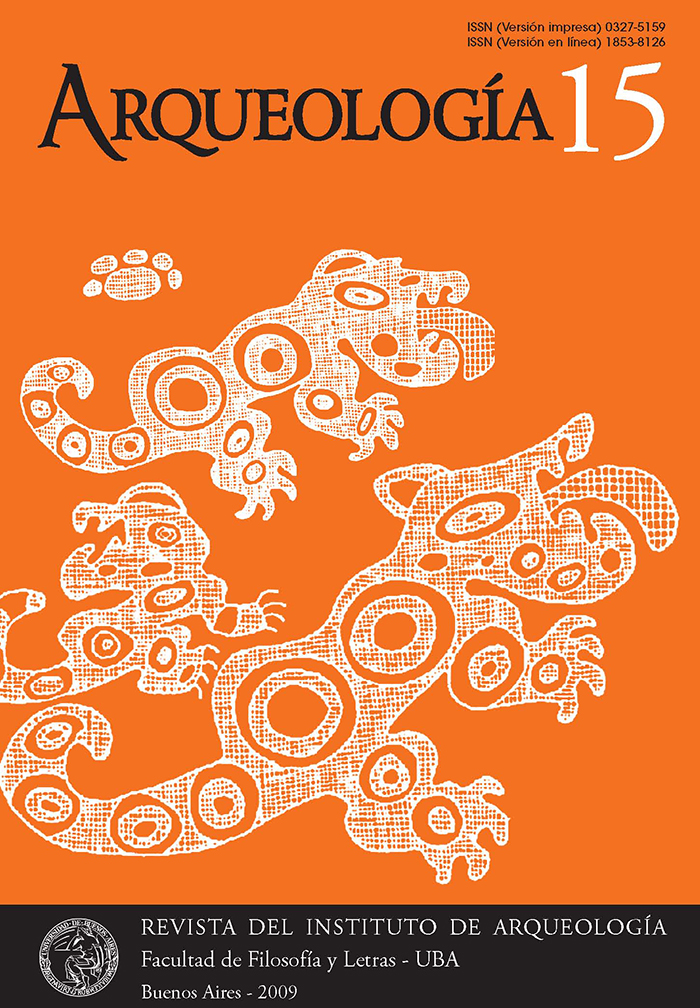Tracing brush strokes. A contribution to the definition of the Belén decorative style
Keywords:
Decorative Style, Regularities, Internal Variability
Abstract
The main purpose of this paper is to contribute to the definition of organizational resources and iconographic units presented in Belén ́s style through the analysis of a ceramic vessels sample coming from funerary contexts of three of its dispersion areas, the Abaucán, Hualfín and Andalgalá valleys (Catamarca, Argentina). It defines the categories and methodological criteria used in the recognition of morphological and decorative regularities on the ceramic pots independently of its valley of provenience. However, in a greater degree of resolution, there are some particularities related to the thematic repertoire and the kind of contour that distinguishes one zone from the other. Finally, it intends to contribute to the construction of a stylistic base of reference which allows us to classify and incorporate fragmentary materials to the analysis based on the morpho-dimensional, thematic and organizational repertoire founded on complete vessels utilized.Downloads
Download data is not yet available.
How to Cite
Basile, M. (1). Tracing brush strokes. A contribution to the definition of the Belén decorative style. Arqueología, 15, 13-40. Retrieved from http://revistascientificas.filo.uba.ar/index.php/Arqueologia/article/view/1696
Issue
Section
Articles
Authors who publish in this journal agree to the following conditions:
- Authors retain copyright and yield to the journal right of first publication with the work registered with attribution license Creative Commons, which allows third parties to use the published always mentioning the authorship of the work and first publication in this magazine.
- Authors can make other independent and additional contractual arrangements for the non-exclusive distribution of the version of the article published in this issue (p. Eg., Inclusion in an institutional repository or publish it in a book), provided that clearly indicate that the work was published for the first time in this magazine.
- It allows and encourages the author / s to publish their work online (eg institutional or personal pages) before and during the process of revision and publication, as it can lead to productive exchanges and greater and more rapid dissemination of work published (See The Effect of Open Access).





(1)13.png)






1.jpg)
1.jpg)


13.png)
1.png)


(1)1.png)









